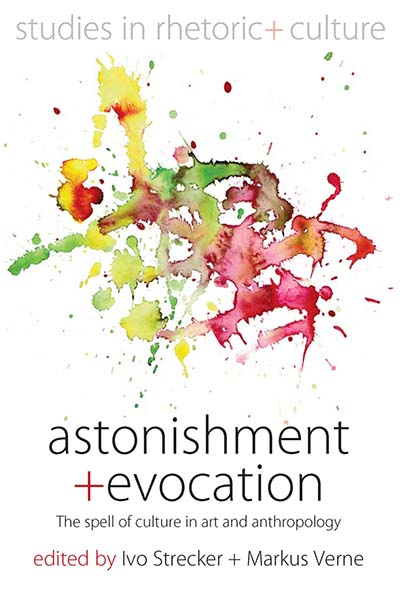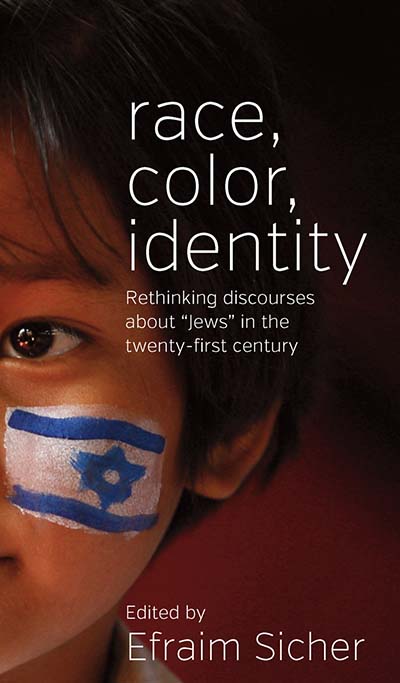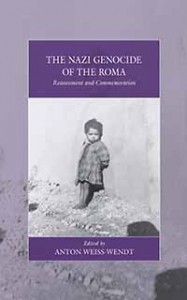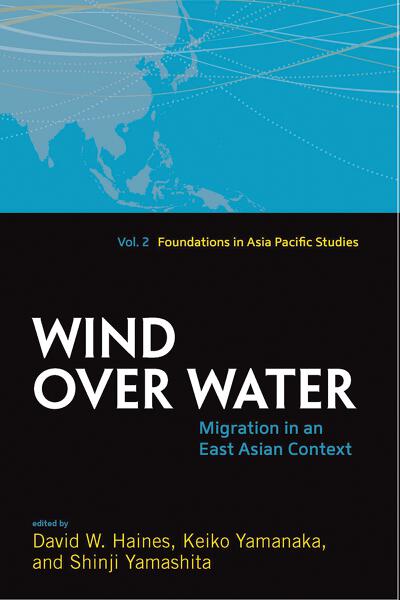Astonishment and Evocation: The Spell of Culture in Art and Anthropology, published last month, addresses the rhetorical turn in the study of human and social sciences, with emphasis on the human reaction to and interaction with the magic of media and art. Below, co-editor Ivo Strecker spellbinds the reader with a discussion of this rhetorical turn in the study of culture.
_____________________________

I returned home from attending Ronald Soeteart and Kris Rutten’s exciting conference on “Rhetoric as Equipment for Living: Kenneth Burke, Culture and Education” (Ghent, 22-25 May 2013) and find (in my dream-mail) news that a grand book launch of Astonishment + Evocation. The Spell of Culture in Art and Anthropology is imminent with the press, television, authors, editors and staff of Berghahn Books present.


 Berghahn Books: Did any perceptions on the subject change from the time you started your research/compiled the contributions to the time you completed the volume?
Berghahn Books: Did any perceptions on the subject change from the time you started your research/compiled the contributions to the time you completed the volume?

 Until now, research on the Second World War in Europe has focused on two main areas: on the one hand, the individual countries, and on the other, the two big “blocs”: the Allies and the Axis Powers. On the part of the Allies, historians made the point very early that states with different political systems and values managed to cooperate temporarily while still striving to achieve their respective goals. Awareness of this was heightened by the sudden shift from the partnerships in the Second World War, to the reality of the Cold War between previous allies the United States and the Soviet Union and the East/West division of the European continent by the Iron Curtain.
Until now, research on the Second World War in Europe has focused on two main areas: on the one hand, the individual countries, and on the other, the two big “blocs”: the Allies and the Axis Powers. On the part of the Allies, historians made the point very early that states with different political systems and values managed to cooperate temporarily while still striving to achieve their respective goals. Awareness of this was heightened by the sudden shift from the partnerships in the Second World War, to the reality of the Cold War between previous allies the United States and the Soviet Union and the East/West division of the European continent by the Iron Curtain. A rewarding part of this project involved writing three cases studies which focus on preserving a scenic gorge, landscaping a canalized river, and restoring “wild” nature to a managed forest. Taken together, these stories capture important shifts in West German efforts to restore varying degrees of naturalness in their intensively used landscapes. Research took me to the Black Forest, the Mosel Valley, and the Bavarian Forest, and to the homes and offices of dedicated conservationists. Whether perusing Black Forest Society records in the basement of a retired forester or reviewing hundreds of postcards protesting the Mosel Canal in the Foreign Office archives, I was struck by the daunting challenge conservationists faced in promoting sustainable uses of nature when more powerful groups favored exploiting it and when legal and administrative support systems for conservation remained weak.
A rewarding part of this project involved writing three cases studies which focus on preserving a scenic gorge, landscaping a canalized river, and restoring “wild” nature to a managed forest. Taken together, these stories capture important shifts in West German efforts to restore varying degrees of naturalness in their intensively used landscapes. Research took me to the Black Forest, the Mosel Valley, and the Bavarian Forest, and to the homes and offices of dedicated conservationists. Whether perusing Black Forest Society records in the basement of a retired forester or reviewing hundreds of postcards protesting the Mosel Canal in the Foreign Office archives, I was struck by the daunting challenge conservationists faced in promoting sustainable uses of nature when more powerful groups favored exploiting it and when legal and administrative support systems for conservation remained weak.
 Wind over Water grew out of a concern to see East Asia – and East Asian scholars – better represented in the literature on contemporary human migration. Perhaps its most important purpose has been to show the full range and import of migration in East Asia rather than attempt any particular theoretical or policy argument. Thus the volume ranges, as the back cover blurb will tell you, “from Korean bar hostesses in Osaka to African entrepreneurs in Hong Kong, from Vietnamese women seeking husbands across the Chinese border to Pakistani Muslim men marrying women in Japan, from short-term business travelers in China to long-term tourists from Japan who ultimately decide to retire overseas.” While there are limitations to this kind of inclusive approach, it has the decided advantage of forcing a consideration of East Asia migration in its entirety: whether short-term or long-term, whether internal or across national borders, whether for economic or social purposes. Furthermore, it does so for countries that are closely linked politically and culturally but divided quite sharply between those with already rather well-developed economies, like Japan and South Korea, and those with still developing ones, such as China and Vietnam.
Wind over Water grew out of a concern to see East Asia – and East Asian scholars – better represented in the literature on contemporary human migration. Perhaps its most important purpose has been to show the full range and import of migration in East Asia rather than attempt any particular theoretical or policy argument. Thus the volume ranges, as the back cover blurb will tell you, “from Korean bar hostesses in Osaka to African entrepreneurs in Hong Kong, from Vietnamese women seeking husbands across the Chinese border to Pakistani Muslim men marrying women in Japan, from short-term business travelers in China to long-term tourists from Japan who ultimately decide to retire overseas.” While there are limitations to this kind of inclusive approach, it has the decided advantage of forcing a consideration of East Asia migration in its entirety: whether short-term or long-term, whether internal or across national borders, whether for economic or social purposes. Furthermore, it does so for countries that are closely linked politically and culturally but divided quite sharply between those with already rather well-developed economies, like Japan and South Korea, and those with still developing ones, such as China and Vietnam.